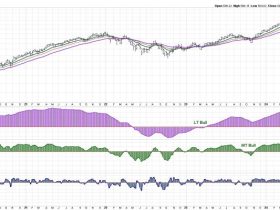In recent years, the realm of cryptocurrency has become a hot topic, with Bitcoin leading the charge as the most recognized and valuable digital currency in the world. The price of Bitcoin has been on a rollercoaster ride, setting five new records recently. This surge in value has once again turned the spotlight on this digital asset and its potential impact on the financial landscape.
Bitcoin, the first cryptocurrency ever created, has consistently made headlines for its meteoric rise in value. The recent series of record-setting prices has further solidified its position as a force to be reckoned with in the financial world. Investors and enthusiasts alike have been closely monitoring these developments, eager to capitalize on the opportunities presented by this digital gold.
One of the key factors driving the price of Bitcoin to these new heights is the increasing interest and adoption by institutional investors. Major financial institutions and corporations have been dipping their toes into the cryptocurrency waters, contributing to the mainstream acceptance of Bitcoin as a legitimate asset class. This influx of institutional capital has injected a sense of legitimacy and stability into the cryptocurrency market, paving the way for even further growth.
Another factor fueling Bitcoin’s price surge is the limited supply of this digital currency. Bitcoin was designed to have a maximum supply of 21 million coins, a cap that adds scarcity to the asset and drives up its value. This scarcity, combined with growing demand and institutional interest, has created the perfect storm for Bitcoin to reach new record highs.
Furthermore, the ongoing economic uncertainty and volatility in traditional markets have also played a role in boosting Bitcoin’s price. As investors seek alternative assets to hedge against inflation and economic instability, Bitcoin has emerged as a viable option. Its decentralized nature, limited supply, and potential for massive returns have made it an attractive investment opportunity for those looking to diversify their portfolios.
On the flip side, this rapid ascent in price has raised concerns about the sustainability and volatility of Bitcoin. Critics argue that the cryptocurrency market is driven more by speculation and hype than by intrinsic value, making it susceptible to sharp price fluctuations and market manipulation. Regulators and policymakers are also paying closer attention to the growing influence of cryptocurrencies, leading to discussions about the need for tighter regulations and oversight.
In conclusion, Bitcoin’s recent price surge to set five new records is a testament to its growing popularity and acceptance in mainstream finance. While the road ahead may be paved with challenges and uncertainties, one thing is certain – the era of digital assets is here to stay. As Bitcoin continues to make waves in the financial world, it will be fascinating to see how this digital currency reshapes the future of money and investment.













